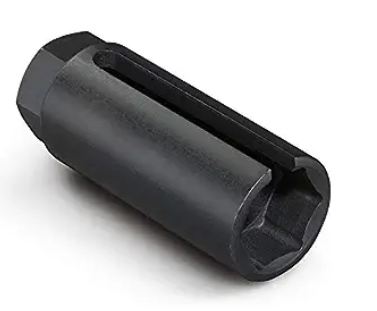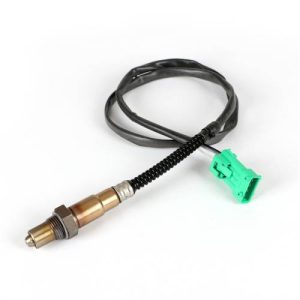Your cart is currently empty!
What is an oxygen sensor socket and what does an oxygen sensor socket do?
automotive enthusiasts and curious minds! In the intricate world of automotive repair and maintenance, certain tools play a pivotal role in achieving precision and efficiency. One such tool that deserves attention is the oxygen sensor socket. In this comprehensive guide, we will delve into the realm of oxygen sensor sockets, unraveling their purpose and significance in the world of auto mechanics. Whether you're a seasoned DIYer or a curious learner, join us on this journey to understand what an oxygen sensor socket is and how it plays a crucial role in modern vehicle maintenance.

Decoding the Oxygen Sensor Socket
What is an Oxygen Sensor Socket?
An oxygen sensor socket is a specialized tool meticulously designed to facilitate the installation and removal of oxygen sensors in a vehicle's exhaust system. This socket features a unique configuration that perfectly accommodates the sensor's shape, allowing mechanics and DIY enthusiasts to access and manipulate the sensor with precision. Typically crafted from high-quality materials such as chrome vanadium steel, the oxygen sensor socket ensures durability and longevity, making it an indispensable tool in any automotive toolkit.
The Purpose of an Oxygen Sensor Socket
The primary purpose of an oxygen sensor socket is to simplify the task of installing and removing oxygen sensors. These sensors, also known as O2 sensors, are vital components of a vehicle's emission control system. They monitor the oxygen content in the exhaust gases and provide crucial data to the engine control module (ECM), enabling the ECM to fine-tune the air-fuel mixture for optimal engine performance and reduced emissions. However, accessing and manipulating these sensors can be challenging due to their location within the exhaust system. Here's where the oxygen sensor socket steps in as a valuable aid.
The Role of an Oxygen Sensor Socket in Vehicle Maintenance
Precision and Efficiency in Oxygen Sensor Handling
When it comes to working with oxygen sensors, precision is paramount. The design of an oxygen sensor socket ensures a snug fit around the sensor, minimizing the risk of slippage or damage during installation or removal. This precise fit enhances efficiency and reduces the likelihood of errors, making the entire process smoother and more reliable.
Protection of Sensor Components
Oxygen sensors are delicate components that require careful handling. An oxygen sensor socket's design incorporates features such as cutouts and recesses that protect the sensor's electrical connectors and wiring. This protection prevents accidental damage, ensuring that the sensor remains intact and fully functional.
Time and Effort Savings
The use of an oxygen sensor socket significantly reduces the time and effort required to access and manipulate oxygen sensors. Its ergonomic design and compatibility with common ratchets or torque wrenches allow for seamless operations, contributing to quicker turnaround times in repair and maintenance tasks.
In conclusion
an oxygen sensor socket is an indispensable tool that simplifies the intricate task of installing and removing oxygen sensors within a vehicle's exhaust system. With its precision, protection, and time-saving capabilities, this specialized socket empowers mechanics and DIYers alike to carry out these essential tasks with confidence. As the automotive industry continues to evolve, tools like the oxygen sensor socket play a crucial role in maintaining the performance, efficiency, and emissions control of modern vehicles. So, whether you're a professional mechanic or an automotive enthusiast, remember to embrace the power of the oxygen sensor socket for a seamless and successful vehicle maintenance journey. Happy repairing and tinkering!
My point of view
3 responses to “What is an oxygen sensor socket and what does an oxygen sensor socket do?”
-
Hi there, just became alert to your blog through Google,and found that it is truly informative. I am gonna watch outfor brussels. I’ll be grateful if you continue this in future.Lots of people will be benefited from your writing.Cheers!
-
I do agree with all of the concepts you’ve introducedon your post. They’re really convincing and will definitely work.Nonetheless, the posts are very brief for newbies.
-
Hurrah! In the end I got a weblog from where I know how to truly take helpful information regarding my study and knowledge.
234-4703 Oxygen Sensor (7) 15894 Oxygen sensor (9) bad oxygen sensor (7) Infiniti QX4 (7) Nox Sensor (89) O2 Oxygen Sensor (17) O2 sensor (83) Oxygen O2 Sensor (8) Oxygen Sensor (297) Oxygen Sensors (20)






Leave a Reply